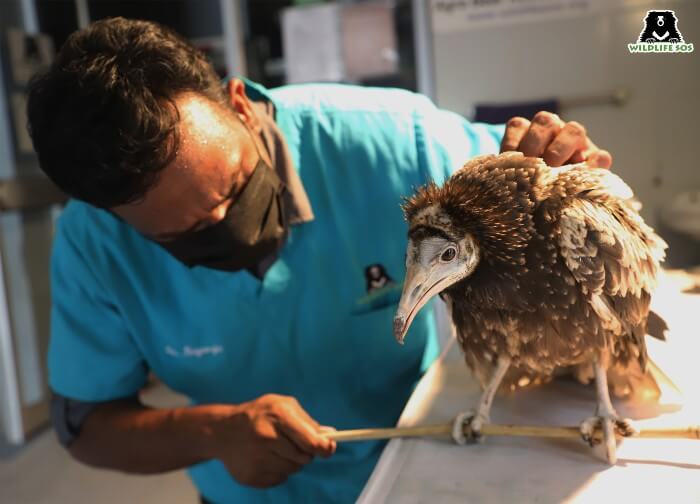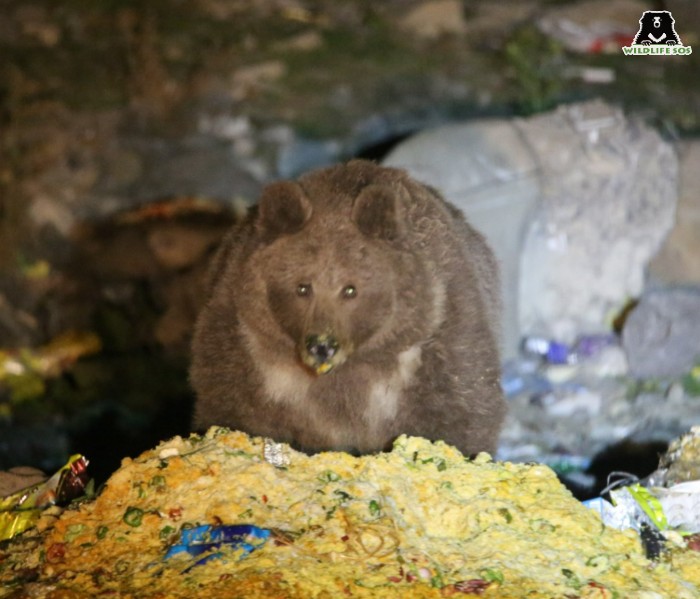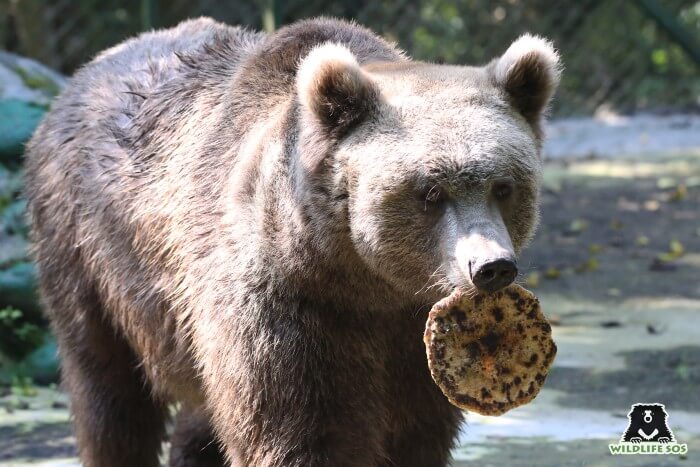Cities are a hub of new beginnings and people from various walks of life move to cities in search of opportunities. This rural to urban migration has been seen throughout history as folks moved from the outskirts or suburbs into metropolitan areas in search of their big break. During the Industrial Revolution, we saw an exodus as people moved from the fragmented and slow-paced life in the countryside to the fast-paced urban life with nuclear families and congested settlements. They did so to find jobs that can help them provide for their families and put food on the table. In a similar manner, we have seen the movement of various animals toward cities and urban areas, in search of opportunities (though their “opportunities” might not come in the same form as a 9-5 job).
Urban areas accumulate a large amount of food waste and leftovers, that come from the misutilization of resources. In this situation, these garbage dumps act as breeding and scavenging grounds for various animals that lurk around in the shadows and live off the excess of human settlements. In this case, the phrase “one person’s waste is another’s treasure” comes true in a very literal sense as animals gather around these dumping grounds to look for food.
Of course, this urban playground isn’t level for all creatures and some fare better than others. The raccoon in North America is quite the jack-of-all-trades and has adapted well to the urban lifestyle. This species can subsist on garbage and food wastes, and the raccoon population has been skyrocketing in cities, even more than its natural population in the wild.
![Some animals thrive in cities while others have a harder time surviving here. [Photo (c) Wildlife SOS/Suryoday Singh Mann]](https://wildlifesos.org/wp-content/uploads/2022/01/bird-rescue.jpg)
In India, we can see the House Crow having a monopoly over certain areas like fish markets. The crows will wait patiently for the fish vendors to pack up and leave after a day of hard work and will quickly arrive at the location to eat any scraps and leftovers. Some of the bolder crows will even swoop in while the market is in full swing and swipe one of the smaller fish straight from the stall or from under the nose of an unsuspecting customer.
Though raccoons and crows might usually take the safer and more careful approach of scavenging, there are other animals that might take a more direct approach. The Rhesus macaque in India is infamous for snatching food and possessions from humans. Though locals may be aware of the schemes of these cunning monkeys, unsuspecting tourists may often fall prey to their tricks. In Shimla, located in the hills of Himachal Pradesh, India, one can often see monkeys swiping glasses and cell phones from humans, and demanding food in exchange for the stolen items. These monkeys have learned these tricks to ensure a constant supply of food in urban areas.
During the beginning of the pandemic, media stations all over the world were flooded with news of wild animal sightings in urban areas. There were various reports of animals entering cities which caused netizens to take to social media with surprising clips. Though many of these animals have been residing in cities all this time, anthropause or a global reduction of human activity gave these animals a sense of security to roam about in the open. From Dolphin sightings near the banks of Istanbul’s Bosphorus, to jackals roaming in parks in Israel’s Tel Aviv, to mass nesting of endangered olive ridleys in Odisha – the lockdown witnessed the movements of many such animals.
These animals have been living within cities for a long time. However, life in the city isn’t always safe for wild animals and they face various perils due to humankind’s lifestyle choices. Wild animals in the cities face the dangers of road accidents, electrocution, dehydration, abuse by humans, human-animal conflict, heatstroke, collisions with tall skyscrapers that have glass windows and being captured for illegal wildlife trade. etc.

For urban wildlife, there is also the danger of these animals becoming dependent on humans for food and losing their natural instinct. While it is encouraged to keep small feeders for birds with food or water, especially in the summer season, one must not feed larger animals like rhesus macaques, nilgais (blue bulls) as they may become dependent and lose their natural instincts.
There is also always the danger of animals consuming food that is unsuitable for them. From pesticides to medical waste – cities are full of harmful toxins that can cause grave damage to animals if consumed. In the United States, the use of DDT (an insecticide used in agriculture) almost caused the extinction of Peregrine Falcons. This chemical affected the durability of their eggs, leading to a very drastic drop in their population. Scientists and conservationists had to artificially boost their numbers of these falcons to ensure that they do not go extinct. After the program was complete, most of these falcons shifted to urban areas and began nesting on tall skyscrapers that mimicked the cliffs which were their natural habitats.
Pesticide poisoning is a major threat to many animals as well as humans. However, another nasty pollutant comes in the form of plastic. It is not uncommon to find stray cattle on the roadside munching on a piece of plastic, or birds using plastic bags to build their nests.
Improper garbage disposal and the presence of large dumping grounds attract animals that come in search of food. A study undertaken by the Wildlife SOS team in Jammu and Kashmir revealed devastating news of Himalayan Brown Bears feeding on food waste discarded by tourists, resulting in obesity and other health issues.

Once in a while, a video will go viral on social media, showcasing a wild animal wandering into an urban locality. It might be something along the lines of a bear wandering into someone’s kitchen or a crocodile sunbathing in the backyard. These videos are often shown in a humorous manner and the people in the video might approach the wild animal as well. Such acts are very dangerous as there are no good outcomes to humans purposefully interacting with wild animals like bears that might get accustomed to entering human spaces.
In 2018, a three-year-old Himalayan brown bear was relocated from Sonamarg after he was found scrounging inside garbage bins near hotels and residential areas. He was relocated to a forest, yet he continued to return to human settlements to look for food. This bear, later given the name Sebastian, was finally shifted to Wildlife SOS’ Dachigam Rescue Center to ensure his safety as well as that of the people of Sonamarg. Thankfully, the authorities were able to intervene in a timely manner before this bear-human conflict could escalate any further but this is not always the case.

Just like Sebastian, many other animals are forced into breaking their natural feeding patterns and become dependent on human excess to survive. As it is predicted that the human population is going to increase steadily, it means that there will be less and less space for wild animals as we encroach upon forests. However, population increase doesn’t just mean more urbanization; it means more pollution, more climate change and more destruction.
To ensure the safety of wild animals that live around us, we need to have proper provisions in place for waste management, pollution control and protection of habitats. Food waste needs to be reduced so that it is not consumed by animals, leading to poisoning and obesity among them. Reduction of food waste will also help to reduce pressure upon agricultural land as there is already a fight for minimal resources. Cities can work on a cleaner and more sustainable model by having animal-proof bins so that wild animals are not encouraged to scavenge in these areas.
To curb problems like the “monkey menace” and animals ransacking urban areas, relocation is not a viable long-term solution. These species are here now and many of them have nowhere to return. We need to work on building green spaces within cities to coexist with the animals that have already adapted to living here. This concept, known as “urban rewilding” focuses on the rejuvenation of dead zones within cities – such as cleaning up wastelands, reforesting barren patches of land, cleaning up lakes and ponds and reducing pollutants to create small habitats suitable for birds, fish, reptiles and small mammals to survive.
Wildlife SOS is continuously working towards ensuring the safety of animals that are living in urban areas. Our helpline numbers are available 24×7 in 4 cities, where our Rapid Response Unit works hard to rescue animals in distress –
Delhi NCR – +91-9871963535
Agra & Mathura in Uttar Pradesh – +91-9917109666
Vadodara, Gujarat – +91-9825011117
Jammu & Kashmir – +91-7006692300, +91-9419778280
We also have projects focusing on covering up abandoned open wells which prove to be a major threat to animals like leopards and other mammals that fall to their demise due to human carelessness.
You can support us by donating HERE





